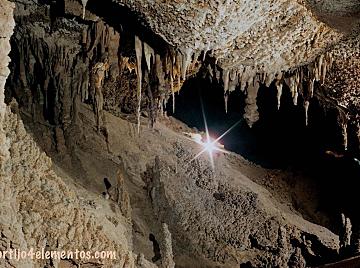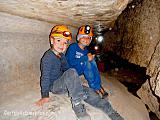Natural Park Karst de Yesos in Sorbas
The Karst en Yesos de Sorbas is located in the eastern Andalusia, at the eastern end of the Tabernas-Sorbas sub-desert corridor, the driest area in Europe.
In an apparent wasteland and arid landscape hides one of the most impressive beauties of Andalusia. It is an underground world carved by the ancient action of rainwater on a powerful plaster rock.
More than 1,000 cavities, most part of them are interconnected, a spectacular and diverse universe of crystalline formations: stalactites, stalagmites, columns and corals, its enormous didactic and scientific value and its great speleological interest have made it one of the karst in plaster more important in the world. One of the geological jewels of the planet.
Karst's geological history dates back six million years, when the Mediterranean Sea invaded the Sorbas basin. When the sea withdrew, the plasters and other sediments remained on the surface, exposed to the slow, but implacable action of rainwater, giving rise to this karst landscape of unusual beauty.
Rainwater is capable of slowly dissolving gypsum rock, generating abundant closed depressions on the surface. The water, which penetrates through these windows, continues its erosive and moderating action, defining the largest underground system in Spain and the second in the world explored in plaster: the Cueva del Agua (Water Cave) system, almost 8,500 meters long.
In the arid shallow steppe of the karst, plant communities have had to adapt to harsh environmental conditions and have developed ingenious strategies to find and retain water. Exclusive and endemic plants of this place live on the plaster, together with one of the most emblematic animal species in the south-east of the peninsula: the black tortoise. The rocky cliffs and slopes, that are very characteristic of this territory, become the ideal habitat for the eagle owl and Bonelli's eagle and the holes in the large gypsum blocks are the refuge of foxes, badgers, weasels and genets.
Karst works like a large sponge that collects and stores all the rainwater and later goes outside through the springs. The most abundant is that of the Mills, which is born in the canyon of the Aguas river. The constant presence of water in this arid environment produces an oasis effect that generates a wetland of great ecological importance.
The town of Sorbas, hanging over the sickle of the Aguas rive,r is located two kilometers from the Natural Park and presents a typically Arab urban structure, with a network of slopes and alleys. Its work in clay, of artisan tradition, and a rich and varied local gastronomy undoubtedly delight the visitor.




